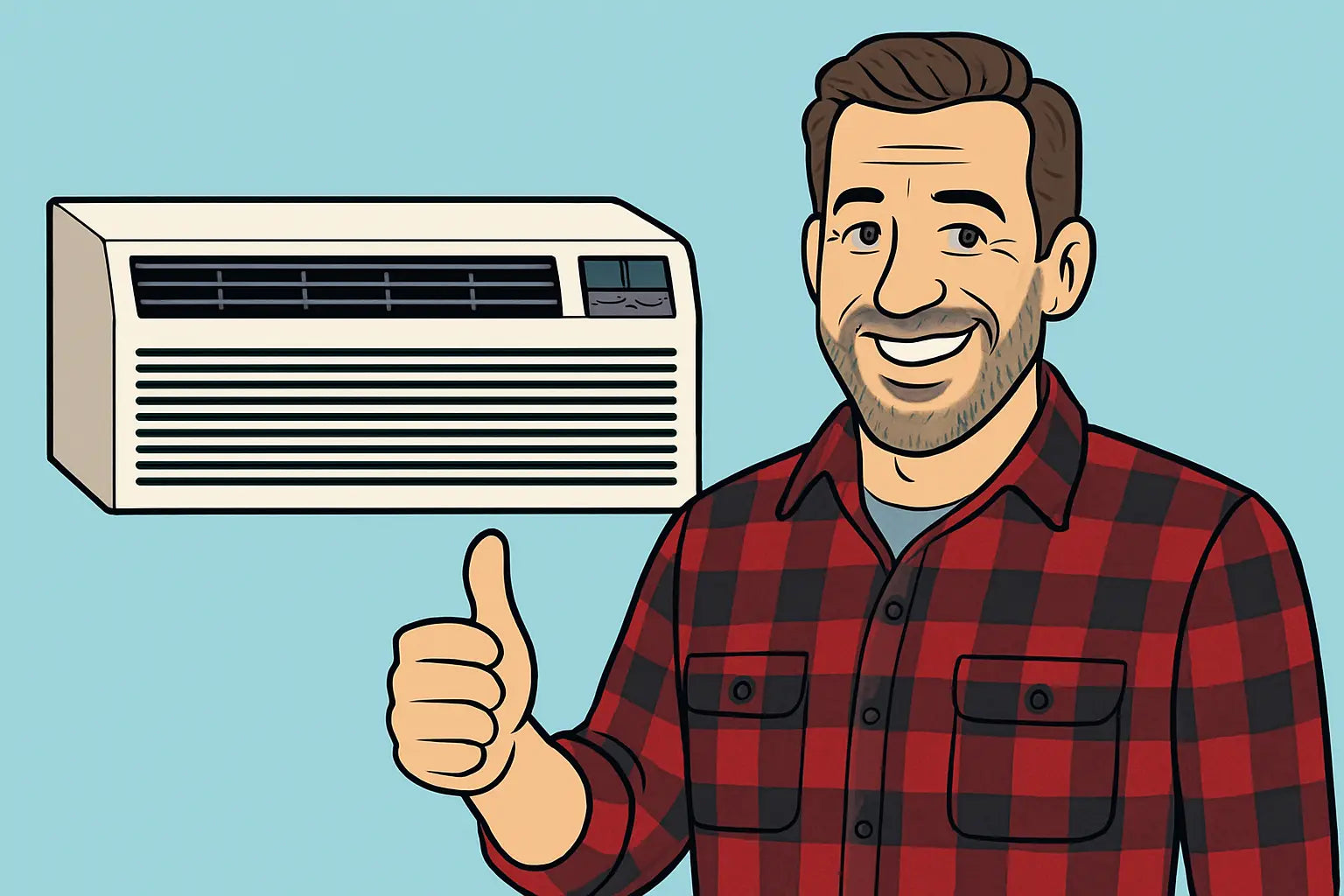Hello Everyone!
Owning a Amana 11,800 BTU Through-the-Wall Air Conditioner comes with the comfort of cool air at your fingertips, but like any appliance, it won’t last forever. At some point, every homeowner faces the question: Should I repair it or replace it?
Making the wrong decision can cost you money, efficiency, and comfort. In this guide, we’ll walk through the key factors to consider, common signs that your AC needs attention, and practical tips to help you make the best choice for your home.
Why the Repair vs. Replace Question Matters
AC repairs can be expensive, especially if multiple components are failing. On the other hand, replacing your unit too early can be a waste of money. According to Energy.gov, proper maintenance and timely upgrades can save you hundreds annually in energy bills and prevent emergency repairs.
By evaluating your unit’s age, efficiency, and performance, you can make a decision that balances comfort, cost, and convenience.
Key Signs Your Amana AC Might Need Repair
1. Unusual Noises
-
Rattling, clanging, or buzzing sounds can indicate loose parts, a failing fan, or worn-out components.
-
Many of these issues can be fixed with a professional service call or a DIY inspection.
-
For a deeper dive on diagnosing AC noises, see Hoffmann Brothers.
2. Poor Cooling Performance
-
If your home isn’t reaching the desired temperature or takes much longer than usual to cool, check filters, airflow, and thermostat settings first.
-
Persistent poor cooling might indicate a failing compressor or refrigerant leak.
3. Rising Energy Bills
-
Sudden spikes in electricity usage often point to inefficiency.
-
Maintaining clean filters and proper installation can help, but significant increases might require repair or replacement.
-
For guidance, see Energy Star’s tips on efficient cooling.
4. Frequent Repairs
-
If you’ve been calling a technician multiple times a season, it may be more cost-effective to replace the unit rather than continue repairing.
When Replacement Makes Sense
Sometimes, replacement is the better option:
-
Age of Unit: Most through-the-wall ACs last 10–15 years. If your Amana unit is approaching this age, replacement might be more economical.
-
Severe Component Failure: Major issues like compressor failure are expensive to repair.
-
Efficiency Concerns: Newer units are more energy-efficient, often using advanced features to lower electricity costs.
-
Upgrade Opportunities: Modern units offer features like energy-saving modes, quieter operation, and better airflow control.
The HVAC.com guide provides insights on how new units can improve efficiency and comfort.
Maintenance Can Extend Life
Before deciding to replace, proper maintenance can keep your AC running longer:
-
Clean or replace filters regularly.
-
Inspect and clean the wall sleeve.
-
Check for leaks or unusual noises.
-
Schedule annual professional maintenance.
For detailed guidance, HVAC.com’s maintenance checklist is a great resource.
Cost Considerations
-
Repair Costs: Minor repairs often cost a few hundred dollars, while major repairs can reach $500–$1,000.
-
Replacement Costs: A new Amana 11,800 BTU through-the-wall unit ranges from $700–$1,200 plus installation.
-
Long-Term Savings: Newer, energy-efficient models reduce utility bills, making replacement a worthwhile investment over time.
Pro Tips from Mike
-
Keep a maintenance log: track repairs, filter changes, and performance notes.
-
Listen to your unit: unusual sounds are often the first warning signs.
-
Combine energy-efficient practices with smart AC use: timers, sleep modes, and strategic cooling help prolong lifespan.
Final Thoughts
Deciding whether to repair or replace your Amana 11,800 BTU Through-the-Wall AC doesn’t have to be stressful. By evaluating performance, age, repair history, and energy efficiency, you can make a decision that maximizes comfort and value.
If your unit is showing signs of age or inefficiency, it might be time to explore the Amana 11,800 BTU Through-the-Wall AC with Remote for a reliable upgrade.
Need more installation and troubleshooting tips for this unit? Visit my guide right here!
Until next time,
- Mike, your cool HVAC guide!







